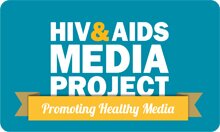How children are affected by HIV and AIDS
Part 1 highlights the many ways children are affected by HIV and AIDS, and challenges the predominant focus in the media on "AIDS orphans". Some of the statistics and stereotypes commonly associated with "AIDS orphans" are contextualised within the range of children rendered vulnerable by the combined impact of HIV and AIDS and poverty.
Children of all races, classes, and geographical areas are affected by HIV and AIDS
Children are affected by HIV and AIDS in a number of different ways.
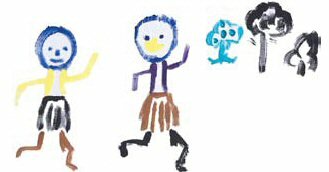
- Being born to a mother who is HIV-positive.Most children who are born to HIV-positive mothers are not HIV-positive themselves. Without prevention of mother-to-child transmission (PMTCT) interventions, 25— 30% of children born to HIV-infected women are likely to be HIV-positive. Where available, current PMTCT interventions in South Africa reduce these figures to between 5% and 15%. Click here for more on PMTCT;
- Being HIV-positive. It is estimated that 1.8% of South African children under the age of 18 are HIV-positive 1. Research indicates that antiretroviral treatment (ART) reduces mortality rates in HIV-positive children by roughly 70% 12. Click here for more on ART;
- Living with sick parents, caregivers, or others who are sick. The times during which parents and caregivers are ill are often times of increased stress and difficulty for children. For example, children often take on additional domestic tasks or care for sick relatives or younger siblings. Children's school attendance can be compromised during this time;
- The illness or death of someone who provides financial or other support to children and their households (whether or not that person lives with the family). As increasing numbers of people depend on limited or decreasing income and resources, children are at greater risk;
- Living in communities with high rates of illness and death. Though it is not well documented, there is likely to be significant emotional impact on children who grow up surrounded by illness and death in their families, social networks, and neighbourhoods;
- Being orphaned; it is estimated that 802 000— or 4.5 %— of children in South Africa would have lost a mother to HIV/AIDS by 2005 14.
What is the definition of a child?
In terms of section 28 of the South African Constitution, a child is defined as a person younger than 18 years old.Definition: OVC
As HIV and AIDS affects children in a variety of ways, the phrase "orphans and vulnerable children" (OVC) was coined. This phrase is an attempt to recognise that it is not only children orphaned by AIDS who are vulnerable as a result of the epidemic. The term OVC remains problematic, as it is frequently used as a replacement term for "AIDS orphans", rather than as a reference to the much broader range of children (including orphans) who are affected by HIV and AIDS21.
Being orphaned
Many "orphans" still have one living parent
In South Africa there are more than 3.4 million children under the age of 18 who have lost either a mother or a father, or both parents.
- The Actuarial Society of South Africa's model (ASSA2003) estimates a total of 4.6 million maternal orphans as of July 2015. A maternal orphan is defined as a child who has lost his/her mother or both his/her parents. For further statistics please see here;
- The General Household Survey (GHS) indicated that in June 2004, this figure totalled 3.3 million.
Almost 70% of all orphans in the GHS 2004 were "paternal orphans": children whose fathers had died but whose mothers were alive.
AIDS is not the only cause of orphanhood
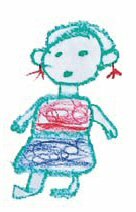
It is estimated that 62% of all maternal orphans have lost their mothers due to HIV/AIDS 14. The proportion of children who have lost their father to AIDS will be lower, because of lower AIDS mortality rates in men. A large proportion of children lose their parents to violence, motor vehicle accidents, and illnesses other than HIV. This makes it difficult to identify the numbers of children orphaned by AIDS, rather than by other causes, and mistakes are easily made by those who give estimates of "AIDS orphan" numbers.
Most children orphaned by AIDS are not HIV-positive
HIV is not transmitted to most children born to HIV-positive parents. Most children orphaned by AIDS are born many years before their parents die. At the time of their birth, their parents are either not yet infected with HIV, or are in the early stages of HIV, and so at a low risk of transmitting the virus from mother to child.
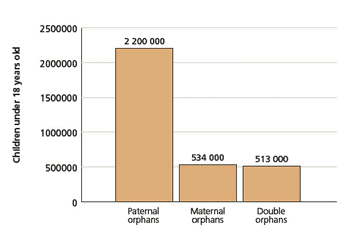 Orphans in South Africa, June 2004 (GHS 2004).
Orphans in South Africa, June 2004 (GHS 2004).
Most orphans are not very young children
According to the 2004 General Household Survey, 70% of orphans are 9 years and older.
The term "orphan" is frequently applied differently by modellers, statisticians, and researchers. Some statistics refer to children up to the age of 15 rather than 18. Sometimes when the term "maternal orphan" is used, it applies to children whose mothers have died, but whose fathers are alive. At other times, it applies to all children whose mothers have died, i.e., the figure might include children whose fathers have also died. The same frequently applies to the term "paternal orphans".
Few children live in child-headed households
The General Household Survey data suggests that 0.6% of children (orphaned or otherwise) in South Africa were living in child-headed households in June 2004. This is equal to roughly 107 000 children 6. This figure should, however, be treated with caution as child-headed households formed only a small subsample of the survey.
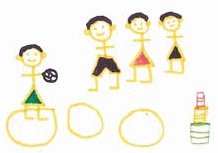 Research shows that child-headed households are frequently temporary households 10, 21. In other words, many child-headed households may exist for a limited period after the death of an adult, prior to other arrangements being made to care for the children. These include adults moving in or the children moving to another household to live with relatives.
Research shows that child-headed households are frequently temporary households 10, 21. In other words, many child-headed households may exist for a limited period after the death of an adult, prior to other arrangements being made to care for the children. These include adults moving in or the children moving to another household to live with relatives.
In other words, the vast majority of children who have been orphaned in South Africa are growing up in households where adults are also resident. While this does not necessarily guarantee the children a supportive living environment, it provides them with adult socialisation and the potential for adult care and support.
Existing evidence about whether orphans are at special risk is contradictory
Studies that compare the experiences of children who have lost one or both parents to children whose parents are alive provide inconsistent results. There is a range of contradictory evidence as to whether the following factors are in fact adversely affected by the death of one or both paren 21 :
- Schooling access or achievement;
- Poverty level and living standards;
- Health outcomes, including nutritional status, weight-for-height/age measures, and mortality and morbidity.
Common experiences of many South African children
Many children in South Africa share experiences often associated specifically with orphans 21, such as:-
Poverty: Using national survey data from 2000, it was estimated that 75% of South Africa's children were living in poverty, where the poverty line is based on a per-capita income of R430 per month (similar to the US$2 a day line). This translates to over 13 million South African children living in poverty.
54% of South Africa's children were living in deep poverty, where the poverty line is based on a monthly per capita poverty line of R215 (almost equivalent to US$1 per day). In other words, even when extreme poverty measures are used, more than half of South Africa's children are poor. 22
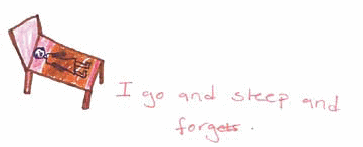
Using national survey data from 2004, it was estimated that 65% of South Africa's children are living below the poverty line, as defined by the South African government for its cash grant poverty alleviation programme. In other words, in terms of the government's own definition, two-thirds of South Africa's children are living in families that are so poor that they cannot afford to fulfil their children's basic needs.4
- Living with people other than their biological parents: 16% of South African children whose parents were alive in June 2004 were not living with either of their parents 6.
- Rights not realised: South African children, whether they are orphans or not, frequently go hungry, struggle to attend school, and experience violence, abuse, and exploitation in a number of forms.
